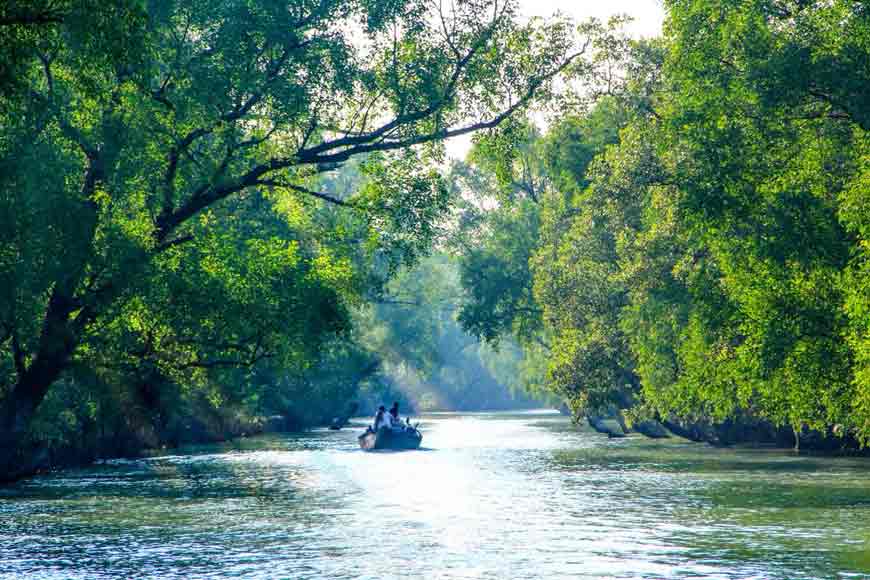Sundarbans: Where beauty battles the storms of survival - GetBengal Story

Nestled in the southern part of Bengal is one of the world’s most enchanting and mysterious places - the Sundarbans. A region of rivers, tides and verdant mangrove forests. The very name of Sundarban means, “beautiful forest,” as these particular mangrove trees are known as Sundari trees, which are exclusive to this region and can stand tall in muddy water whose roots twist upwards and above the surface of the soil. For all this natural beauty, it hides a story of relentless struggle, courage, and hope.
The Sundarbans are made up of more than simply trees and tigers. They are the home for millions of human beings living at nature's margins and depending on the forest and rivers for their survival. Life is hard in the Sundarbans. The soil is salty, the weather is erratic, and the land is constantly threatened by storms and floods. Nevertheless, the people will remain here because this is their home - the same home where generations of ancestors lived, struggled, and fought to survive.
Life in the Sundarbans is about twists and turns. The frequent river overflows flood the villages. Cyclones, such as Aila, Amphan, and Yaas, have ravaged thousands of houses and farmers' streets. Salinity inhibits crop cultivation. Many simply lose everything and restart from scratch. Yet, they do not succumb. They refashion their huts, resow their fields, and continue their battle for existence. Life in this region is not merely a choice — it is inclinated.
The Sundarbans women are indeed emblems of fortitude and bravery. While the men leave for cities such as Kolkata or Mumbai, the females hold down the fort: caring for children, elders, and what's left of the household. They toil in the fields, gather firewood, bring water, and cast nets into the rivers to catch fish. A few of the more intrepid women will even step into the jungle to harvest honey — always a perilous affair when tiger attacks are frequent. After flooding, they dry the wet grains, repair broken walls and cook, using whatever can be salvaged. They live mundane lives, though living with such courage makes them extraordinary.
Floods, erosion, and migration are an accepted part of life in the Sundarbans. The rivers come, taking the land and people must relocate. Migration is a matter of survival. Many go to nearby towns where they find jobs as rickshaw pullers, domestic workers, and construction laborers. Some eventually send their children to the city to hopefully find work and better futures. Leaving is never easy. These families miss the ties to their village, the fields where they grow food, and the abundant sounds of the river. Even when they leave their home, their heart still remains in the Sundarbans.
The Sundarbans is about nature’s fury but also about journalism and ethnography bringing those stories into the world. Many journalists, photographers, and researchers come to learn about the people who live in the region. Ethnography refers to living with a community, watching day-to-day life, and reporting their stories, where that practice equals accountability and care. When it is integrated into journalism, it may help us to surface the relationship between gender, ecology, and survival in this vulnerable place. Through their reports, we can see how Sundarbans women are able to manage traditional household women’s work along with the demands of nature; their everyday lives tell stories of endurance, sacrifice, and deep love for place.
Each and every place in Sundarbans tells a story - families waiting for loved ones to return home, mothers patching up a wall after a storm, fishermen getting ready to leave at dawn despite the dangers. The people of this region live in a time-limited state of fear about losing everything and every day they remain hopeful. They show us what it looks like to understand living with the land and the experience of nature; nature is their friend and their enemy.
In the end, the Sundarbans are not just a place - they are an ongoing lesson in strength and survival. Every individual in the Sundarbans is a warrior, every home is a symbol of resilience, and every story is a testament to the fact that hope can be found even at the bottom of dark floodwaters.
As they watch the tide invade and take their ground, the people flicker their lights again, and when storms blow down their houses, they build homes again, with the same hands that once sowed. Their lives tell us that beauty is not found in comfort but in courage — the courage to stand like the Sundari trees, no matter the height of the tide.
Image courtesy: Wikimedia Commons











